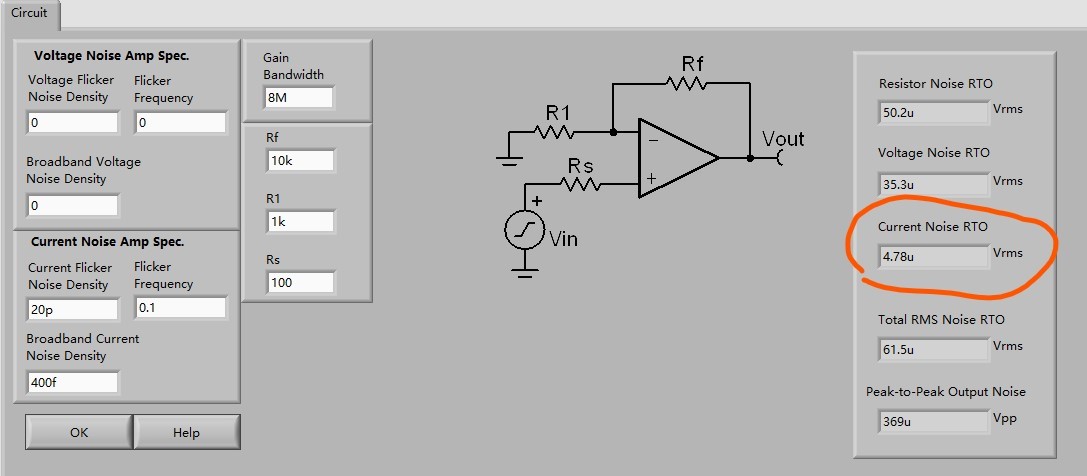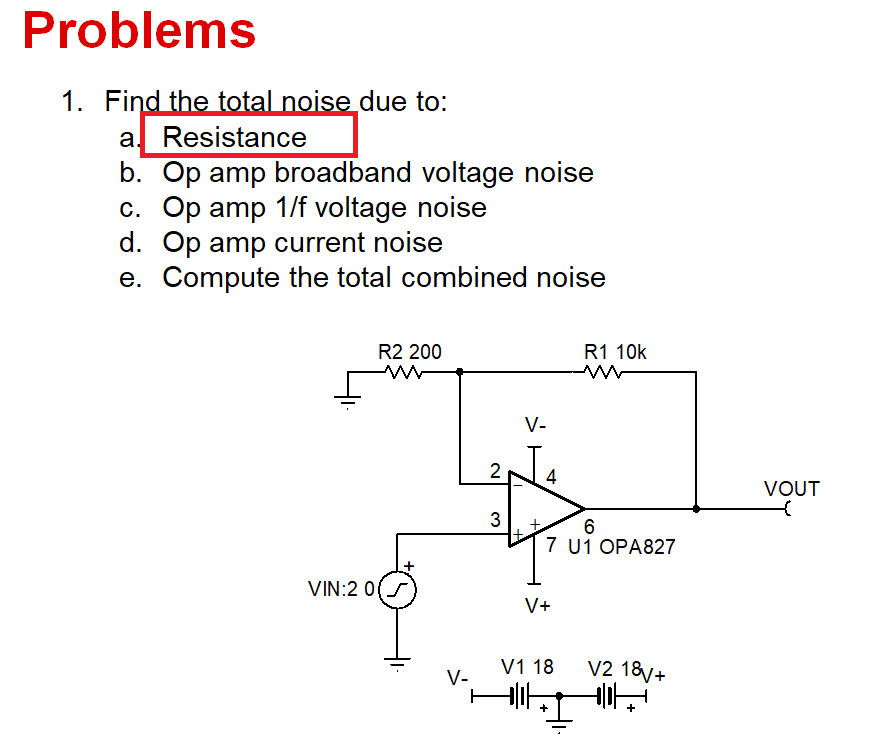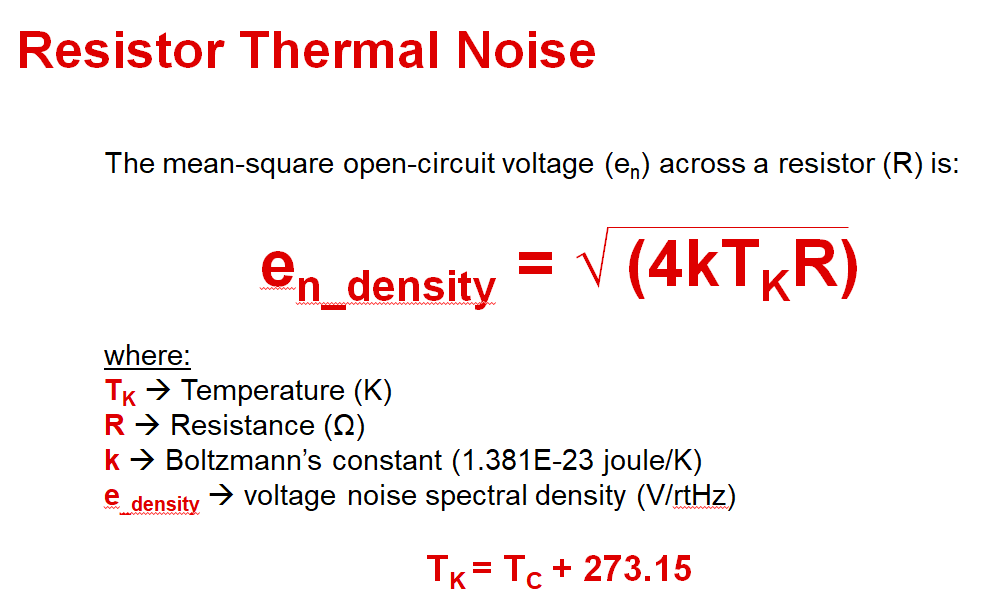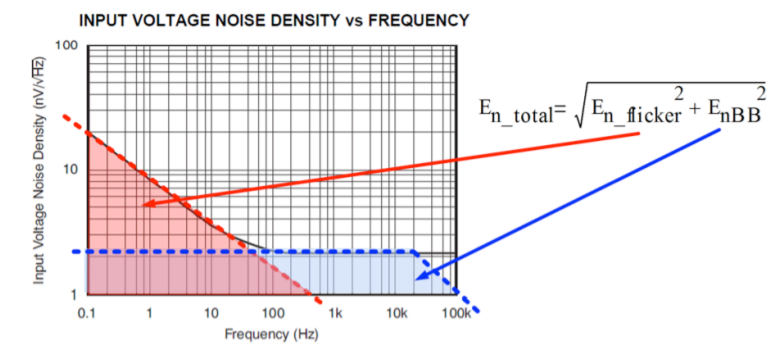Hi
I downloaded the Analog Engineering's calculator, when I using the Noise calculation, what's the formula for the Current Noise RTO.
my calculation is as below:
Noise Gain=1+Rf/R1
FH=GBW/Noise Gain = 8M/11
BW=1.57*FH
1st: calculate the broadband for R1//RF; EnBB1 = (BW)^0.5 * 400fA * R1//RF
2st: calculate the 1/f for R1//RF; Enf1 = 20pA*0.1^0.5*(ln(BW/0.1))^0.5* R1//RF
same for RS
EnBB2 = (BW)^0.5 * 400fA * Rs
Enf2 = 20pA*0.1^0.5*(ln(BW/0.1))^0.5* Rs
so RTI_CurrentNoise = (EnBB1^2+Enf1^2+EnBB2^2+Enf2^2)^0.5
RTO=RTI_CurrentNoise * NoiseGain = 4.307 uVrms which is not same to 4.78uV.
So please help to check? thanks






